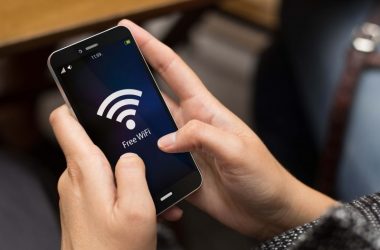 After years of talk about wireless technologies' potential for widespread use in medical applications, they appear to be ready for a takeoff in adoption within health care organizations.
After years of talk about wireless technologies' potential for widespread use in medical applications, they appear to be ready for a takeoff in adoption within health care organizations.
And some doctors and IT professionals think that wireless has the potential to transform health care in the U.S. by improving patient care and lowering costs.
It remains to be seen whether that will prove to be a sound prediction or yet another case of cockeyed optimism about new technologies. But wireless proponents such as Dr. Eric Topol are in a bullish mood.
Topol, a cardiologist and administrator at Scripps Health in San Diego, is a longtime advocate of wireless technologies and has worked as an adviser and board member at some start-ups. In a keynote speech at last month's International CTIA Wireless 2009 conference in Las Vegas, he pointed to a number of technologies that are either on the market or being used in trials, claiming that they could help improve patient monitoring and reduce errors in administering medications.
“At the same time the economy has hit bottom, we've never had more exciting innovation in wireless medicine,” said Topol, who is chief academic officer at Scripps Health and director of the Scripps Translational Science Institute, a research unit.
In an interview, Topol cited three reasons for the increasing interest in wireless technologies: bandwidth improvements that enable the transmission of images and other rich medical data, an influx of applications from software vendors, and what he called the “grand success” of recent efforts to improve the quality of patient care through wireless projects.
Topol said that over the past two years, he has seen a huge improvement in the personalization of care for his own patients through the use of wireless cardiac-monitoring tools. Sensors attached to a patient's chest can transmit real-time metrics such as heart rhythms, body temperature and blood-oxygen levels, enabling Topol to look at weeks of information when making a diagnosis and devising a treatment plan.
In the past, just two or three days' worth of heart data was typically recorded for each patient, he said, adding that the new technologies provide “a much broader window of the heart rhythm to watch.”
During his CTIA keynote, Topol demonstrated several technologies, including an adhesive heart sensor developed by Corventis Inc. that he had placed on his chest. The patch transmitted a variety of data to a monitor that displayed the information as a doctor or medical technician would see it, including a diagram of Topol's body position to show whether he was standing or lying down.
Corventis announced the availability of its “wearable sensors” on April 21. Other wireless cardiac-monitoring vendors include LifeWatch Corp. and CardioNet Inc., where Topol once served on the medical advisory board. (He is currently a member of the board of directors at Triage Wireless Inc., a start-up that is testing a wireless application for monitoring blood pressure and other vital signs.)
Brent Atwood, LifeWatch's chief operating officer, said the use of the company's LifeStar ACT technology has grown from 35,000 patients in January 2007 to about 120,000 now. The technology transmits heart rhythm data via a Bluetooth connection to a cell phone equipped with a specialized interface. For periods of up to 21 days, the phone continuously sends the data to a LifeWatch call center, where software detects any irregularities and alerts cardiac technicians.
LifeWatch is moving all of its cellular connections to the Verizon Wireless network and plans to work with the mobile carrier to expand its support to wireless monitoring of conditions such as diabetes and sleep disorders, Atwood said.
Methodist Healthcare System, which operates 23 medical facilities in the San Antonio area, is implementing a wireless patient-monitoring and communications system at six hospitals. The multimillion-dollar project was jointly announced by Sprint Nextel Corp. and General Electric Co.'s GE Healthcare unit on April 6.
The new system will use GE's Carescape technology and the dedicated Wireless Medical Telemetry Service frequency to transmit patient data to medical personnel equipped with more than 800 Sprint Nextel phones.
Productivity Boost
“There's a lot of pressure in health care to become more efficient, and it's made worse by the shortage of nurses,” said Eddie Cuellar, Methodist's CIO. “We have to find a way to make them more productive as they walk back and forth on hallways 20 to 30 times a day.”
One of the wireless applications being rolled out by the health care system is AirStrip Technologies LP's AirStrip OB, which will send fetal monitoring data to obstetricians. That should enable doctors to move more freely between patients, both within one hospital and at different facilities, while still keeping track of how each patient's labor is progressing, Cuellar said.
Intermountain Healthcare in Salt Lake City runs patient monitoring applications at 23 medical facilities over a Wi-Fi network that's based on technology from Cisco Systems Inc. The network, which cost about $3 million to set up, is now also being used to transmit data from infusion pumps, the portable devices used to administer medications intravenously, said Ty Bindrup, an enterprise network planner at Intermountain.
As the data is sent from the pumps to messaging and alarm-management middleware from Emergin Inc., “we can see how much of a drug a patient has received,” Bindrup said. The information can then be compared against appropriate-dosage data in an effort to lower the chances of errors, he added.
Not everyone is convinced, though, that wireless applications will sweep through the health care industry and remake medical practices in the process.
For example, Gartner Inc.analyst Wes Rischel thinks wireless technologies clearly hold promise for health care, but he said IT managers and hospital officials shouldn't get carried away with optimism about the tools. Rischel pointed to RFID technology as a cautionary tale, saying it has been pushed in the health care market for more than 10 years but isn't well suited to tracking medical equipment. “There's plenty of hype there, but not much acceptance,” he noted.
The wireless networks used in hospitals and the applications offered by vendors have matured over the past two years, Rischel said, adding that he does expect “accelerating growth” in adoption.
Even so, he characterized technologies such as the heart-sensor patch that Topol demonstrated at CTIA as “incremental advances.” The real revolution in health care IT, Rischel said, will likely come from something else: increased deployments of electronic medical records systems and the resulting improvements in data-sharing among organizations.





